Birdfinding.info ⇒ Rare, endangered, and rapidly disappearing. In the 1990s it remained locally common in Koke’e State Park and above. Through the 2010s it could still be found with effort and some luck by walking the Pihea and Alakai Swamp Trails, but less reliably. Likely remains somewhat more common in the upper reaches of the Alakai Wilderness.
Akeke’e
Loxops caeruleirostris
Endemic to Kauai, where it is essentially confined to Koke’e State Park and the Alakai Plateau.
Since the 1990s, its population has declined more sharply than any other Kauai endemic. Starting from an estimate of approximately 20,650 in the mid-1990s, the estimate decreased to 7,839 in 2000, then to 5,669 in 2005, to 945 in 2012.
Identification
A small yellow-and-olive honeycreeper with a sharp-tipped, conical, pale-gray, finchlike bill and a blackish mask.
The underparts are yellowish and the upperparts are mostly olive with yellower areas on the forecrown and rump.
The tail is proportionately long and thin, and deeply notched,
The sexes are similar, although males apparently show more contrast between yellow and olive tones and have a more extensive and blacker mask.
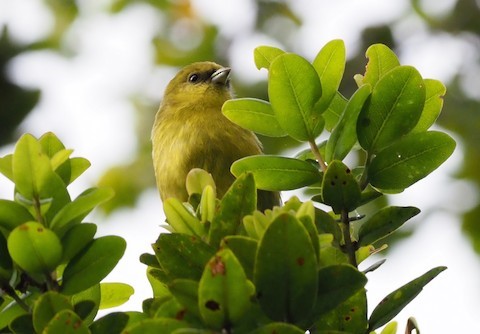
Akeke’e. (Mohihi-Waiale Trail, Kauai, Hawaii; October 15, 2018.) © Stephan Lorenz
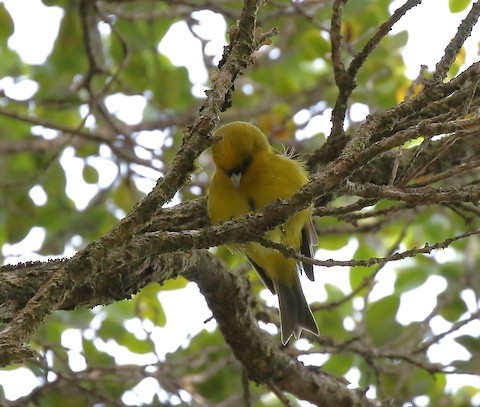
Akeke’e, male showing long, thin, deeply notched tail. (Mohihi Ridge, Alaka’i Wilderness Preserve, Kauai, Hawaii; October 13, 2019.) © Bret Mossman
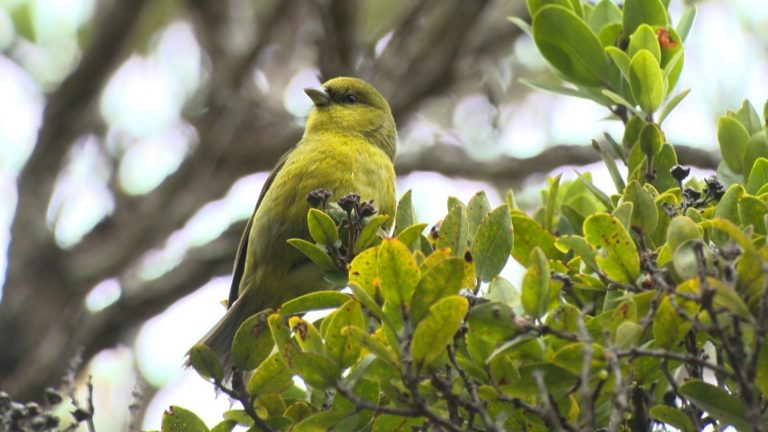
Akeke’e. (Kauai, Hawaii; February 8, 2014.) © Benjamin Clock
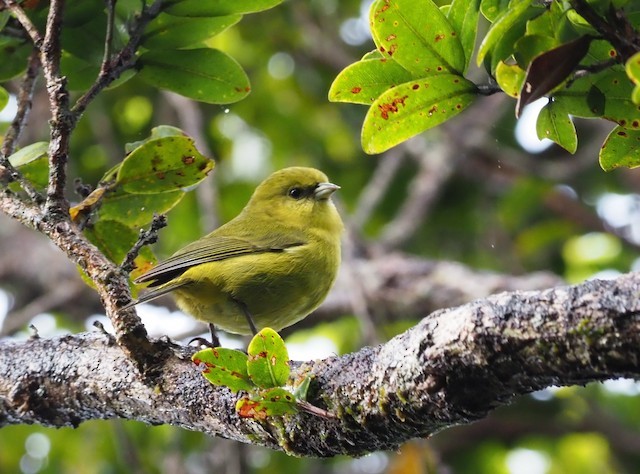
Akeke’e, apparently a female. (Mohihi-Waiale Trail, Kauai, Hawaii; October 15, 2018.) © Stephan Lorenz
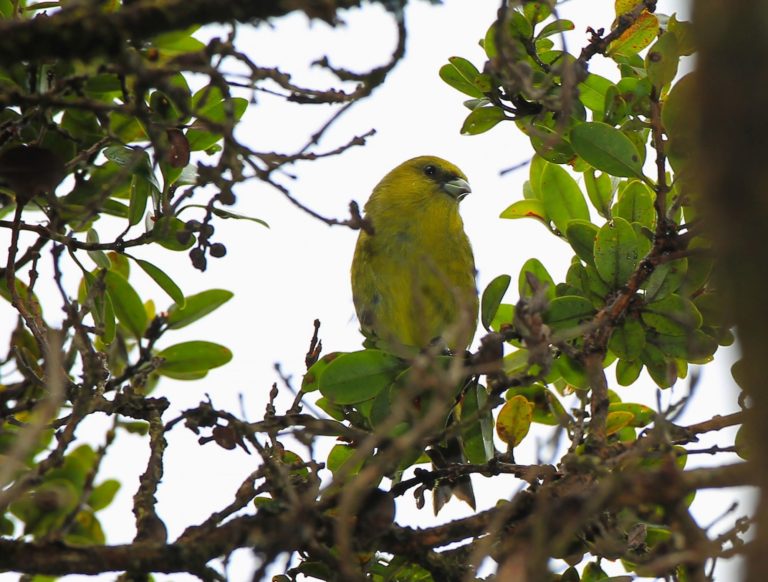
Akeke’e. (Alakai Swamp, Kauai, Hawaii; February 7, 2013.) © Brian Scully
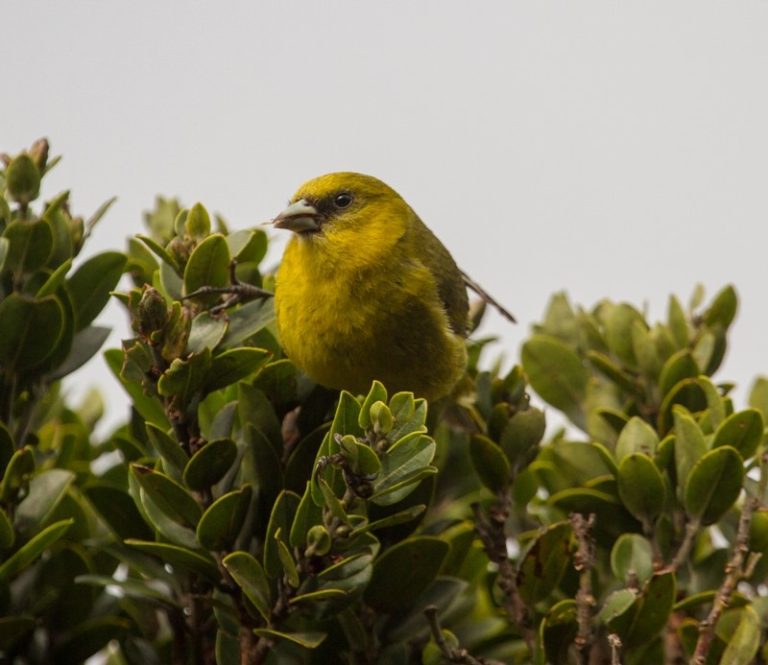
Akeke’e. (Kauai, Hawaii.) © Robby Kohley
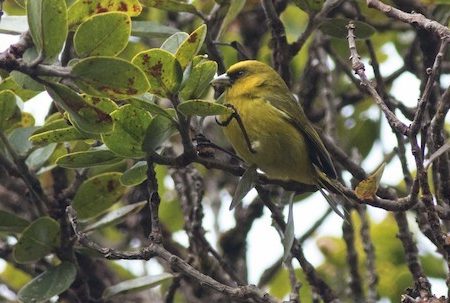
Akeke’e. (Alaka’i Wilderness Preserve, Kauai, Hawaii; March 11, 2019.) © Joachim Bertrands

Akeke’e. (Pihea Trail, Kauai, Hawaii; February 17, 2020.) © Daniele Mitchell
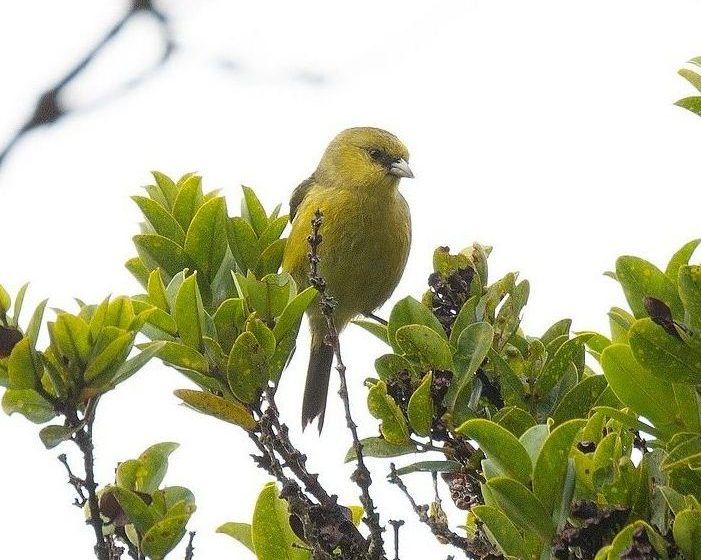
Akeke’e, male showing long, thin, deeply notched tail. (Alakai Swamp, Kauai, Hawaii; February 15, 2016.) © Jim Denny
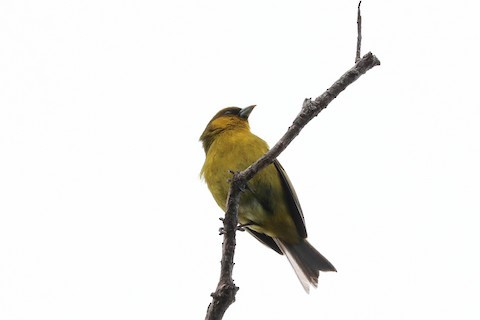
Akeke’e, male showing long, thin, deeply notched tail. (Pihea Trail, Kauai, Hawaii; April 15, 2019.) © Jen Sanford
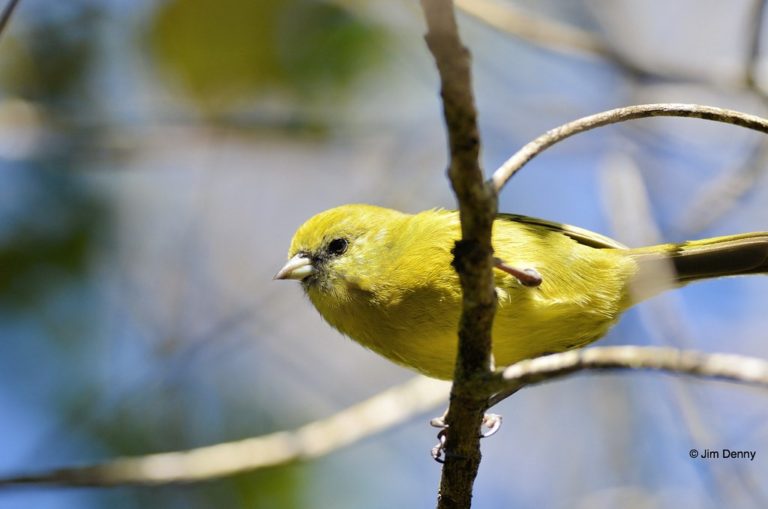
Akeke’e, female. (Pihea Trail, Kauai, Hawaii; August 25, 2012.) © Jim Denny

Akeke’e, apparently a male. (Mohihi-Waiale Trail, Kauai, Hawaii; October 15, 2018.) © Stephan Lorenz
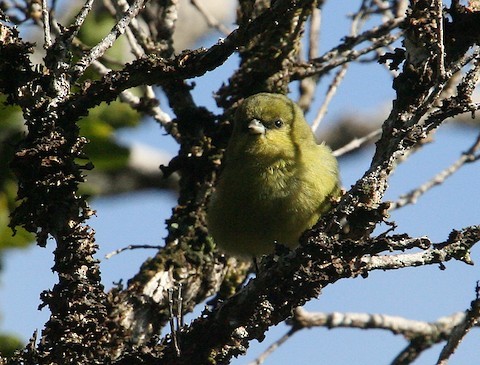
Akeke’e, female. (Kawaikoi Stream, Kauai, Hawaii; November 9, 2007.) © Michael Walther
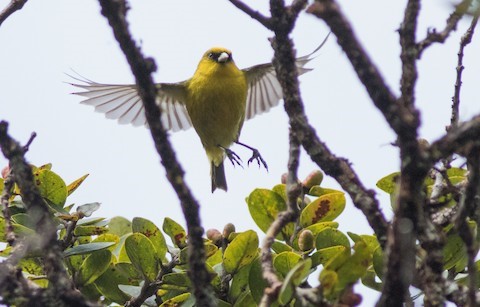
Akeke’e, male in flight. (Alaka’i Wilderness Preserve, Kauai, Hawaii; March 11, 2019.) © Joachim Bertrands
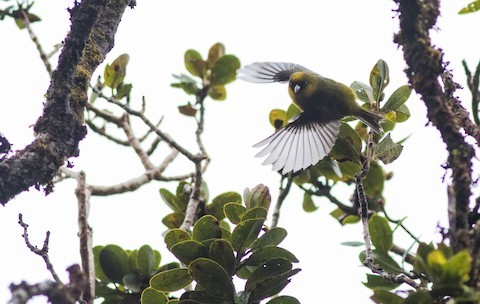
Akeke’e, male in flight, showing yellower patches on forecrown and rump. (Alaka’i Wilderness Preserve, Kauai, Hawaii; March 8, 2019.) © Joachim Bertrands
Voice. Most calls are thin, rising notes with a squeaky or buzzy quality: Songs are described as “variable high-pitched, vigorous trills with abrupt shift ca. midway through.” (Pratt 2005)
Notes
Monotypic species.
IUCN Red List Status: Critically Endangered.
References
BirdLife International. 2018. Loxops caeruleirostris. The IUCN Red List of Threatened Species 2018: e.T22720832A130851810. https://dx.doi.org/10.2305/IUCN.UK.2018-2.RLTS.T22720832A130851810.en. (Accessed May 12, 2020.)
eBird. 2020. eBird: An online database of bird distribution and abundance. Cornell Lab of Ornithology, Ithaca, N.Y. http://www.ebird.org. (Accessed May 12, 2020.)
Pratt, H.D. 2005. The Hawaiian Honeycreepers: Drepanidinae. Oxford University Press.
Pratt, H.D., and C.J. Sharpe. 2020. Akekee (Loxops caeruleirostris). In Handbook of the Birds of the World Alive (J. del Hoyo, A. Elliott, J. Sargatal, D.A. Christie, and E. de Juana, eds.). Lynx Edicions, Barcelona. https://www.hbw.com/node/61441. (Accessed May 9, 2020.)
Pyle, R.L., and P. Pyle. 2017. The Birds of the Hawaiian Islands: Occurrence, History, Distribution, and Status. Version 2 (January 1, 2017). http://hbs.bishopmuseum.org/birds/rlp-monograph/. B.P. Bishop Museum, Honolulu, Hawaii.
Xeno-Canto. 2020. Akekee – Loxops caeruleirostris. https://www.xeno-canto.org/species/Loxops-caeruleirostris. (Accessed May 12, 2020.)
